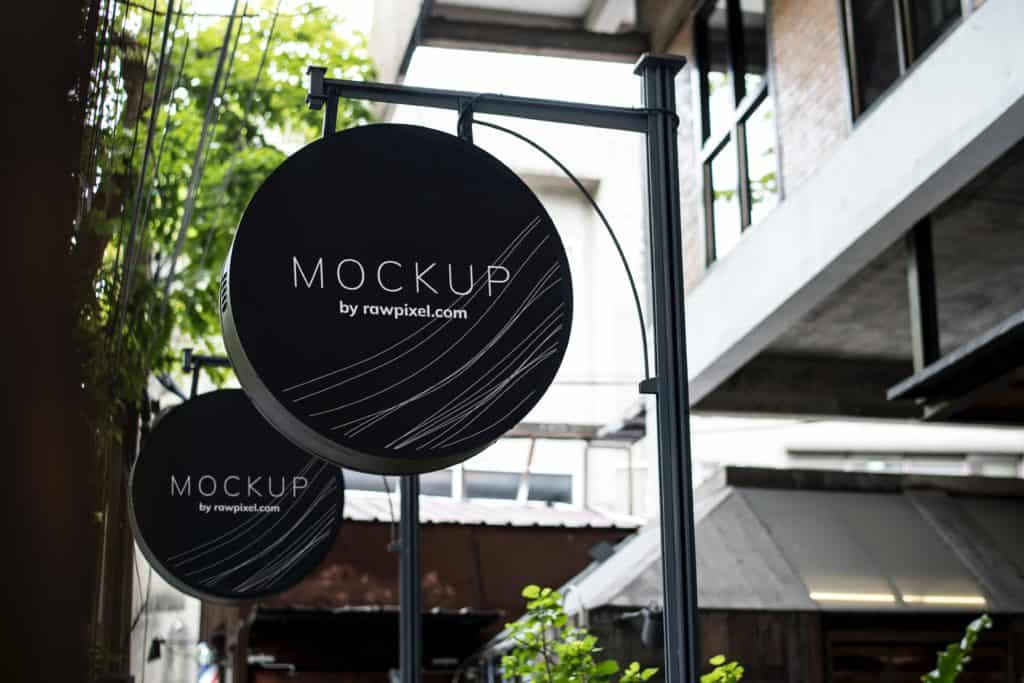Table of Contents

I wish I could count on one hand the amount of times a small business or startup has asked me ‘How much will it cost for a logo?’. Thus, deep breathing begins and a politely delivered pitch. All the while fighting the desire to kick the person under the table who set up the meeting in the first place for destroying any prospect of leaving on time for something that will, with certainty, amount to nothing.
In the beginning, there will be lots of nodding, but then the very recognisable moment when the penny drops. You are not immediately going to design a logo for them. With this dawning realisation, the lights behind their eyes begin to dim, as you patiently try (in vain) to explain the importance of the process that leads to delivering the damn logo.
This process is the process of branding. And maybe it’s not the most positive way to begin to explain branding, but I do want to ensure absolute clarity here: never, ever consider your brand as simply a logo!
If you are launching a business whether it be B2B or B2C, then you’re gonna need a brand. For example, if you are starting a law firm, understanding the dynamics of a law and attorney logo may be helpful. Knowing the basics will help you navigate this minefield. If you’re looking to create your logo effortlessly, consider using a logo designer app.
Here I will outline real branding lessons for building a strong brand from scratch:

Your Brand And Your Business Are Intrinsic To Each Other
Business-Brand, Brand-Business, it doesn’t matter which way round you look at it, the sooner you start seeing them as an extension of each other, the sooner you will get your head around the importance of branding. To put it simply, your brand is the visual (pictures/colours/graphics) and verbal (words/tone of voice/descriptions) representation of your business. Without it how are you going to communicate anything to anyone with any level of consistency.
If you know your business well, and you should, then you’ll understand what drives you; what your passions are; why you want to make a difference; who you are targeting; and why you are different from others. And for you, the branding process is going to be a piece of cake(ish).
Lesson 1: Business and Brand go hand in hand
You Need It By WHEN?!
In fact the branding process can be rather complex. It’s largely based around logic and truths but sprinkled with a good deal of strategy and creativity to make you look and sound pretty darn terrific. Of course it’s all true what the business is saying and stands for, but applying the brand glitter to amplify the message requires patience and talent.
For start-ups and SMEs the approach should, and can be, less complicated because speed, agility and budget sensitivity are all key at this stage of your growth.
The likelihood is that you will have to pay an agency or freelancer to help, so do take time to find the right one. Set aside some money for this in your budget and start thinking about it earlier rather than later. Your brand should never be an afterthought. It needs crafting and you won’t get a brand strategy overnight.
Lesson 2: Don’t leave it until the last minute

P-lease Pay Attention Here
It is impossible to speculate here how long your brand will take to develop or how much it will cost but good preparation will help set the wheels smoothly in motion and save you time.
The 5 Ps To Remember:
Product & Purpose – What is your business? What are you providing? Can you clearly articulate this to someone without industry knowledge? What is the purpose of your business? Some brands have a higher purpose ie. NGO’s, but most don’t, so stick to the truth and avoid getting unnecessarily profound.
People – Who is your target audience? How well do you know them? Have you done any research (studies, surveys, interviews)? Gut feelings are not your answer.
Positioning – Where do you sit in the marketplace with respect to your competitors? To state the obvious…if you don’t know your competitive set then you can’t possibly understand how you differentiate, and if you don’t differentiate then I’m afraid things might not work out that well for you. Presumably there is something you can hang your hat on, call your own; and this my friends is your unique position in the market. Hold on tight to this but remember it won’t stay that way forever so you need to keep evolving in line with your customer’s conscious and unconscious needs.
Passion – We all gravitate towards people who we share passions and values with and surprise, surprise, it’s the same with brands. You need a set of values (ideally around four) to act as your guiding principles. So really think about the things that drive your business. Be honest and personal, as you will have to conduct your business by these standards, but try to be somewhat bold and different. Don’t just state the obvious eg. a law firm who has a value of ‘trustworthy’….meh…that’s a given!
Personality – Again, think of your business like a person. How do you behave? How do you talk? What do you look like? What do you wear? Do you have a good sense of humour? All of these sorts of questions will help you define the behaviour of your brand. Quick recap moment – your brand is the outward face of your business.
Lesson 3: Preparation is key

Managing Expectations
So assuming you’ve done your homework and sat down with a branding expert of your choice, then here’s what you can and should you expect as an outcome. At its simplest, the process should deliver a brand strategy and a VI System (Visual Identity). However, depending on what you’ve discussed and paid for, you may get more, you may get less.
Visual Identity design generally begins once the brand strategy is confirmed. Both are developed in an iterative and collaborative manner with you, and should be backed up with solid rationale/research.
A brand strategy generally consists of the following elements clearly articulated in some kind of report or visual presentation:
- Brand Positioning
- Brand Values
- Brand Personality (demonstrated in both verbal format and within your visual identity).
The strategy can also include Brand Promise, Brand Tagline, Elevator Pitch, and more.
Your visual identity consists of:
- Your logo (yay!),
- Colour palette
- Typography that your business will use religiously
- Secondary graphics (lines/stripes/shapes) developed for use across all your corporate collateral
- You should also get slide templates for things such as presentations, business cards/letterheads,
- A brand guideline, which helps you and others, implement the brand consistently
You may negotiate more but this will come down to budget vs requirements.
Lesson 4 – Be clear about which tangible elements you need to get out of the process

Start As You Mean To Go On
You now have the basics. Do try to consistently apply your visual identity according to the rules or before you know it you’ll have a visual nightmare on your hands. Believe me, as you grow the problem will grow too. We all know the story of Frankenstein.
Do not file your strategy away in a ‘nice to have’ sort of way. Use it as a core piece of business intelligence, guiding you in everyday business decisions. For example, ask yourself if it’s important that a company you wish to partner with shares the same values as you. How will your personality shape your BD approach? Build your strategy into onboarding for new recruits, and ensure it forms the basis for company culture, and finally, always use it to brief anyone that you work with on your subsequent marketing efforts. Never, ever consider your brand as simply a logo! When thinking about branding, it’s essential to go beyond the best company logos and delve into the deeper aspects that define your brand’s identity.
Lesson 5 – Branding exists for a purpose. Be smart and use it.
The Evolving Beast
So there we have it! Five important lessons to help you sail (yes sail…let’s be positive) through what might well be your first brand process.
For my parting words of wisdom, I’ll say this; brands, and all the elements that form them, have varying shelf lives. So be mindful that as your business grows and evolves, tweaks, and sometimes revolutions, are almost certainly required.

This article does not constitute legal advice.
The opinions expressed in the column above represent the author’s own.
Start managing your legal needs with Zegal today
READ MORE: Successfully Scale Your Startup With These Helpful Tips
READ MORE: Top Tips For Constantly Upskilling Your Employees





